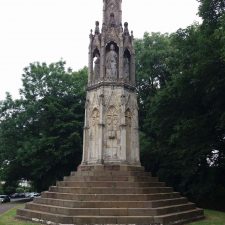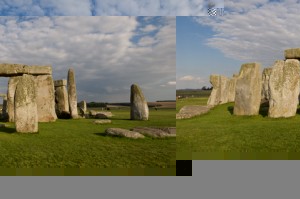The Eleanor Crosses

When you see road signs telling you the distance to London the distance given is to a point at the South of Trafalgar Square where a statue to Charles I currently stands. A plaque on the floor tells you that this was the location of the original Charing Cross (a replica of which now stands outside Charing Cross Station.
To find out how the original hamlet of Charing came to get such a monument and the addition to it’s name, we have to go back to the end of the 13th Century.



